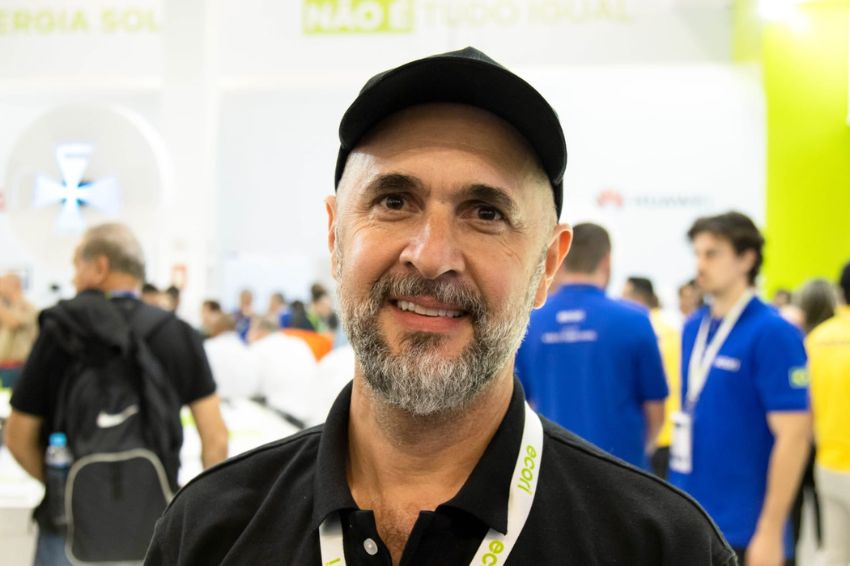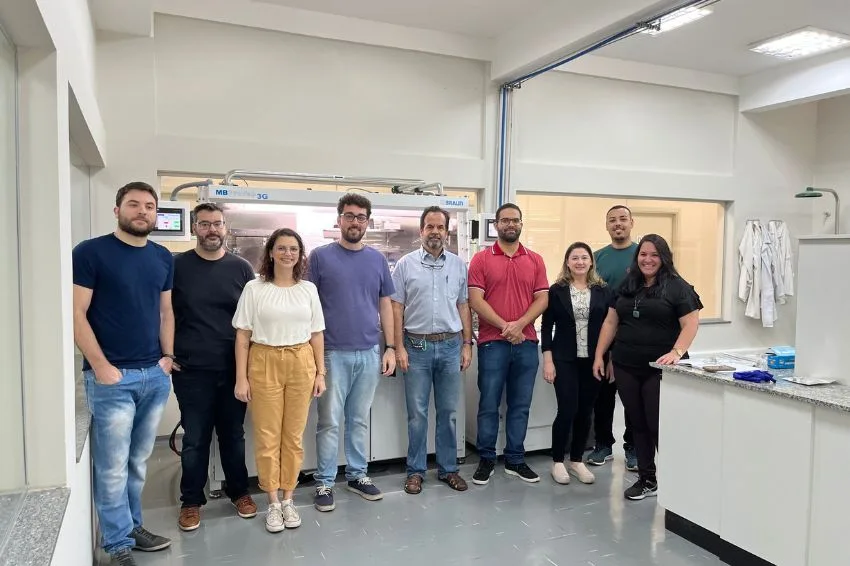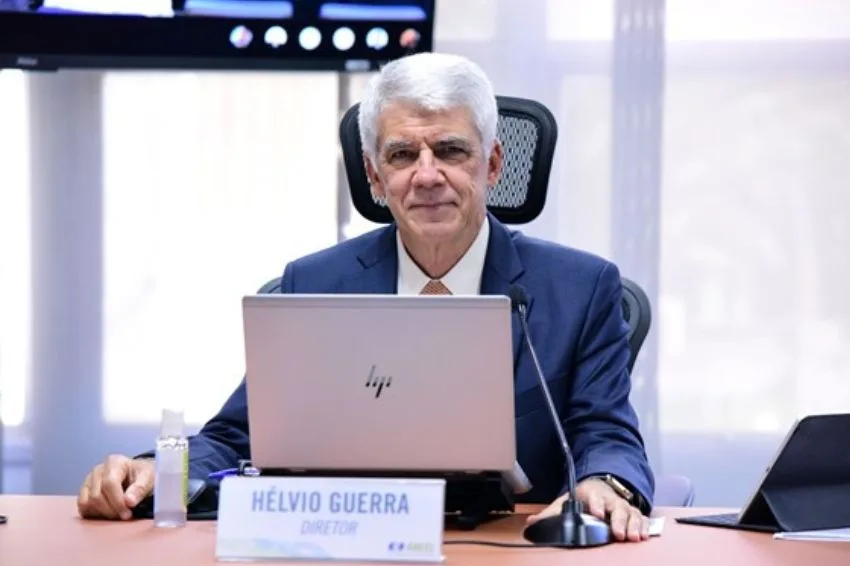A high demand per sustainable solutions and for alternatives that help reduce the value of your electricity bill made the market solar energy was on the rise during the last years, attracting entrepreneurs, creating opportunities and new companies in Brazil.
However, big part of these companies They can't even last very long active, facing difficulties in attracting customers, face competition and make a profit, essential for your growth and permanence in an increasingly competitive and competitive market.
For this reason, the Solar Channel carried out a interview with André Nogueira, marketing director at Ecori, one of the most consolidated distributors of photovoltaic equipment in the national market, for discuss the matter.
During the conversation, some strategies marketing It is simple tips so that a startup company in the photovoltaic market put it into practice quickly and organize the experience between brand and customer, and consequently survive and prosper in the photovoltaic market.
Check it out below the main excerpts from the interview:
André, in your point of view, what is the main reason for the failure of companies in the solar energy sector?
The reason for the failure of these companies may be diverse, but everyone has always pointed to their ability or inability to be profitable, that is, earn more, reduce costs and minimize risks. Here at Ecori we call it the value triangle.
At the center of this triangle is the brand, which cannot be confused with identity symbols, such as logo, colors and characters. The brand is the experience that your customer takes home when they interact with your company, and how this experience impacts its perceived value. Therefore, it is necessary to think, plan and be strategic, aligning the points of contact between brand and customer and delivering strategic value to all of them.
And what are the initial marketing strategies that a newly created company needs to have to start boosting sales in the solar energy sector?
Marketing cannot be confused with advertising, this is one of the marketing strategies. In fact, marketing is a very clear concept, which is based on building tools that facilitate sales. It is an area that is directly linked to results, to profit.
That said, to enter and remain in the solar energy market, the entrepreneur needs to know the terrain he will be stepping on, so the first thing to do is research and understand how the market works, who the players are and what gaps and needs you face. will propose to satisfy.
The next step is to define your positioning – that is, what you want people to keep in mind when they come into contact with your company. This is where we begin to craft the experience we want to provide to the customer.
Do you want to be remembered for having agile service, for being extremely technical, for the quality of the products you use and offer? Remember, it is you who defines and leads the customer on this journey, never the other way around!
Take the example of these two luxury car brands. Volvo is recognized for being a brand that is very concerned about safety, while Ferrari positions itself with a sexy lifestyle. Both are in the luxury car market, but their positions are very well defined and recognized by customers.
Defining this positioning is one of the first steps and one of the most important for a company's growth, but, unfortunately, many entrepreneurs end up not giving due importance to this issue.
And after this?
Once you have defined your positioning and found your client's profile, now comes the time to communicate with the client so that they realize your value, understand and differentiate your proposal. To make this delivery effective, we come to the first practical tip: clearly define your sales/marketing funnel.
The funnel is a way for you to organize your marketing and sales actions in line with the customer's evolution in the commercial process. A well-structured funnel has at least 3 phases.
The first of these is the attraction phase. It is at this stage that you meet your audience, and as the name says, the objective is to draw their attention to something that they may not know, but that they might be interested in, a lure. You need to understand how and where leads will seek information about solar energy and how your company, respecting its positioning, will attract the attention of these customers.
There is nothing new here, solar energy customers look for information on the internet. Another fact, coming from sector research, is that a large part of sales come from recommendations from friends and family.
Ok. If you already know this, now you need to establish your digital presence and take care of your relationship with satisfied customers. In this sense, your social networks should be a priority. Additionally, you should create your profile on Google My Business, which will display images of your business on a “how to get there” map when your customers search for your name on Google.
Both platforms are free and intuitive to use. If you are able to build a website you should do so too, as it will convey more credibility and trust to the customer as they approach your company.
With the platforms configured, it’s time to think and develop the content strategy. Remember that you are the one who “directs” the customer experience, and it starts here, so think about the key messages that might attract people interested in finding out more, generating expectations to go deeper and talk to you about the subject, but avoid falling into commonplace. One tip is to test content, schedules and calls to action so that you can define how you will work.
Another simple and functional tip is to create 2 or 3 pieces of content per week, upload them on social media and also on MyBusiness. Once you understand the content that has the most views, promote it with weekly investments between R$ 100 and R$ 150, choosing your target audience carefully. Remember to connect your WhatsApp for service. Ready!
With three posts, organized platforms and R$ 150.00 per week you will start receiving leads. Repeat the operation weekly, always testing content and measuring the results.
Working with this information, activating customers' curiosity and with messages that strengthen your positioning, will make your company stand out from others, and best of all, with you directing the experience.
After the attraction phase, how should a company act when receiving contact from its first customers?
Let's say that the company has evolved and now has five leads asking for quotes per week. We are now in the consideration phase, where the customer's interest has already been aroused and now it is necessary to demonstrate that your company is the best option for them.
This is where the magic really happens, but before investing your time, look for ways to qualify the lead you received by asking questions. These questions will help you understand if this lead has the profile and interest to move forward, or if they are just “looking”. Examples: Where will the installation be? When do you plan to install? Do you intend to invest with your own resources or would you prefer me to present you with financing simulations? Why is installing solar energy a priority for you?
Remember that the experience has already begun and now it’s time to deliver value. When receiving a message from a new client, respond quickly, ask open-ended questions, position yourself as an expert, answer all their questions and also present your portfolio in a pleasant way.
By filtering the customers that really interest you, serving them quickly and cordially, asking questions that help you identify pain points, presenting solutions and knowledge, you can start to build value with the customer. Its objective is to be a reference in customer perception, to be the Coca-Cola of the solar energy market.
This client may not close a contract with you for a number of reasons, but they will certainly remember your company and recommend you to someone who comes to talk to them about the subject, after all, they will still want you.
After managing to attract customers and positioning yourself as a reference, how do you win their favor, even with higher prices than the competition?
The third phase of the funnel is negotiation. This is where you will present your proposal in an organized way. At this point, your client already has you as a reference, they already know that you are an expert, but they will need to see and make your value proposition tangible.
The tip is to be detailed without being boring. In your presentation, invest in showing your qualities, certifications, team uniformity, stickered car, etc., but also how the service will be carried out.
Photos of details such as fixings, terminals, organization of the distribution board and other stages of the installation will provide more security and guarantee golden moments.
When you explain, for example, that you use safety equipment, the importance of brands and the fixing procedure, the importance of the distributor and the equipment brand for a long-term relationship, among other information that will reinforce your image as a “reference” that you started to create and is now becoming tangible.
These factors must be combined with social proof of satisfied customers, guarantee seals, course and training certificates, such as the Ecori Certified Professional, for example. These steps are led by you, and will reflect the customer's experience so far.
If everything was done according to your plan, the value of your proposal will be clear and the client will be willing to pay a little more for your quality, and even if they don't, for reasons that you cannot control, they will have you as a reference. , will recommend your company and demand its quality from other competitors, raising the standard of companies in the market in which you operate.
And the installation itself, how should it behave and how important is this moment in the relationship?
With the installation of the solar energy system, the customer will begin to realize whether their promises will be fulfilled. Don’t let the “peteca fall”!
With a yes in the proposal, the value delivery phase begins and your narrative must be translated into results, so review your promises and take care of every delivery detail. What you should observe at this stage is whether you are just doing, or whether you are delivering what you are doing.
I'll explain better, if you talked about the quality of your installation, show the photos you took of the details, show your inspection checklist, deliver the plant in the same way that Ferrari would deliver a car to its customer.
Note that doing things and not showing them does not add any value to the customer's perception and experience, so organize these deliveries well.
Simple things such as informing the name, documents and photos of the installers, being punctual and silent during installation, observing distance but being friendly with people in the house/company, being clean and organized during installation and many other good practices will be seen as “value deliveries” and fulfillment of the promises and expectations created in the previous phases.
After delivery of the plant, what should the relationship with the customer be like? What strategies are also important considering the after-sales process?
It never ends, it always evolves! If we say that the customer is satisfied and their referrals will be your biggest sellers, it is obvious that your relationship journey does not end at the installation, in fact that is where it begins. Think of this phase as a harvest.
You cultivated, planted, watered and now you can reap the fruits of what you did, so it's not time to relax but to optimize your results.
The first thing I advise is on offering the O&M contract, that is, plant maintenance services, such as monitoring, periodic inspection visits, cleaning and preventive maintenance.
Firstly, these will be recurring and predictable revenue, with costs that will be diluted as your customer base grows. It's a saving with exponential gains, but at first it may seem insignificant.
With this contract, your company will further strengthen its relationship with the customer, because you will be the one taking care of their plant.
This is an even stronger relationship of trust with the customer and will generate more referrals. Who takes care of his garden? His gardener! Who takes care of his pool? His swimming pool. And, who takes care of his solar plant? Your enterprise!
I believe we went through all the steps and were able to illustrate a little about marketing thinking for companies in the sector. Thank you for the opportunity and I invite you to access our content channels such as ecoriplus.com.br to always acquire more knowledge and authority. A big hug!
















2 Responses
Said everything! Knowing how to do it is not enough! …
THANK YOU TO ECORI CANAL SOLAR FOR ALWAYS MAKING US ATTENTION TO THE WORLD OF SOLAR ENERGY